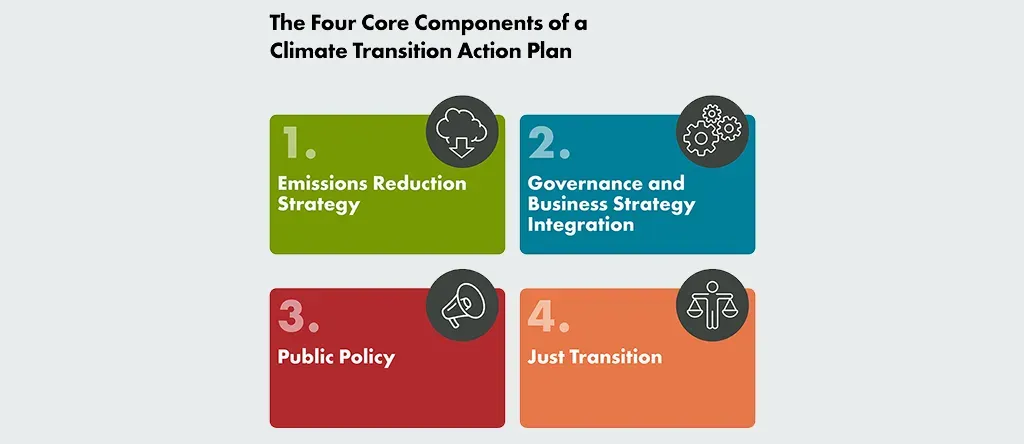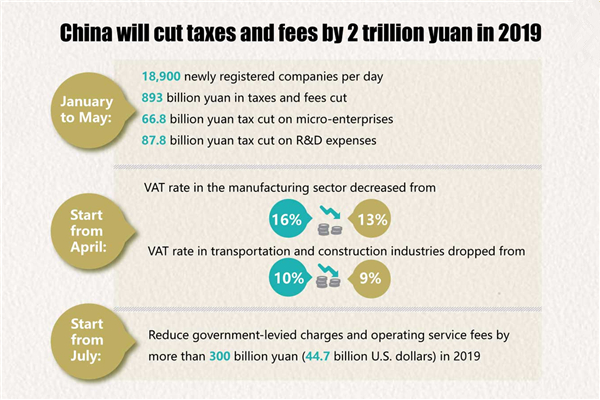Climate transition plans are rapidly becoming a cornerstone of corporate responsibility and accountability, particularly as Australian businesses brace for the impending regulatory changes regarding climate-related disclosures. With significant pressure from investors and the public for credible climate plans that align with net zero strategies, companies can no longer afford to treat these plans as mere formalities. Instead, effective transition plans should embody a clear commitment to sustainable practices and emissions reductions that adhere to the Paris Agreement goals. The recently introduced Climateworks Centre guide presents a well-structured framework that highlights essential criteria for developing credible climate transition plans, helping businesses navigate this complex landscape. By aligning their climate disclosure guidelines with these robust standards, companies can enhance their resilience and position themselves favorably in a world increasingly focused on combating climate change.
In the evolving dialogue surrounding corporate climate action, credible sustainability strategies and robust transition approaches are garnering considerable attention. As Australian organizations prepare for compliance with new climate disclosure requirements, strategic frameworks that outline clear pathways to achieve substantial emissions reductions are crucial. The importance of credible climate action plans cannot be overstated, as businesses strive to align their initiatives with global targets and local expectations. Such plans not only fulfill regulatory obligations but also serve as vital tools for corporate governance and stakeholder engagement. Embracing effective climate transition strategies is now essential for Australia’s businesses to thrive in an era where environmental responsibility is paramount.
Understanding Climate Transition Plans in Australia
Climate transition plans are crucial for Australian businesses as the country shifts towards a more sustainable economy. These plans outline how companies will reduce their greenhouse gas emissions in alignment with Australia’s commitment to the Paris Agreement. The urgency of implementing credible climate transition plans cannot be overstated, as regulatory requirements for climate-related financial disclosures are now a reality, beginning in July 2024. Australian businesses must be prepared to demonstrate their commitment through actionable strategies that clearly define their road to net zero.
To effectively navigate this complex landscape, companies should consult frameworks like the one developed by the Climateworks Centre. This guide establishes clear criteria for evaluating the credibility of climate transition plans, ensuring they are not merely aspirational documents but rather comprehensive strategies that integrate emissions reductions with overall business objectives. The necessity for credible transition plans is only expected to grow as investors, consumers, and regulators increasingly emphasize the importance of corporate accountability in climate action.
The Seven Criteria for Credible Climate Transition Plans
The Climateworks Centre’s guide identifies seven criteria pivotal for crafting credible climate transition plans. Firstly, ambitious and robust emissions targets are essential; companies need to establish science-based net zero targets, accompanied by measurable interim goals that cover scope 1, scope 2, and relevant scope 3 emissions. This adherence to specific, actionable benchmarks is crucial for ensuring that businesses are sincerely committed to their environmental objectives rather than relying on vague commitments to future action.
Secondly, a feasible action plan outlining detailed steps to meet these targets is imperative. Companies must clearly communicate how they will achieve their emission reduction goals, moving beyond generalizations and vague intentions. Additionally, the third criterion prioritizes actual emissions reductions over carbon credits, necessitating real operational changes rather than a mere financial remedy. With these criteria in place, businesses can develop comprehensive strategies that hold them accountable for their impact on the environment.
The remaining criteria focus on the integration of climate strategies with business plans, stakeholder engagement, and governance. Companies must align their climate action with broader organizational strategies, ensuring they have the necessary support for implementation. Strong governance structures are vital for embedding climate accountability within company practices, while ongoing reviews and disclosures guarantee that plans remain relevant and transparent. Together, these seven criteria form a robust framework that supports Australian companies in developing credible and effective climate transition plans.
Aligning Transition Plans with Corporate Strategy
Transition plans are not just regulatory requirements; they are integral to corporate strategy and sustainability efforts. Businesses that align their climate transition plans with their overall corporate strategy are better positioned for success in an increasingly competitive landscape. This alignment allows companies to integrate sustainability into everyday operations, ensuring that actions towards emissions reductions are not viewed in isolation but as part of a comprehensive approach to business resilience and adaptation.
For businesses, this means assessing how their climate strategies can be financed and resourced effectively. Transition plans must incorporate financial considerations, highlighting how emissions reductions align with budgetary allocations and long-term financial health. By doing so, companies demonstrate to investors that they are serious about their climate commitments while simultaneously managing risks and capitalizing on new market opportunities that emerge from sustainable practices.
The Role of Stakeholder Engagement in Climate Plans
Effective climate transition plans require robust engagement with stakeholders who influence the company’s emissions targets. Companies need clear strategies for involving key stakeholders, including employees, suppliers, customers, and investors, in the planning process. This collaboration can foster a culture of sustainability within the organization, where all members are informed about their roles in achieving climate objectives. Moreover, stakeholder engagement can yield valuable insights, enhancing the credibility of the transition plans through diverse perspectives.
Transparency in communication regarding climate policies is equally critical. Companies that openly engage with stakeholders regarding their climate-related actions and policy advocacy foster trust and accountability. This transparency not only helps in building a positive corporate reputation but also attracts investors and consumers who prioritize sustainability. In a world increasingly focused on climate action, the credibility of climate transition plans will depend significantly on the effectiveness of stakeholder engagement strategies.
Governance Structures for Effective Climate Action
Strong governance is a cornerstone of credible climate transition plans. Companies must establish clear governance structures that integrate climate accountability into their broader corporate governance. This includes defining roles and responsibilities within the organization, particularly for boards and executive teams, to ensure that climate action is prioritized at every level. A supportive culture that incentivizes climate leadership within the organization is vital for driving progress towards net zero targets.
Moreover, the governance framework should encompass processes for continuous review and adjustment of climate strategies. As the regulatory landscape evolves and new scientific insights emerge, companies need to be agile in modifying their transition plans to maintain compliance and competitiveness. By embedding strong governance within climate initiatives, companies position themselves to meet both current and future challenges while enhancing their credibility in the eyes of various stakeholders.
Benefits Beyond Compliance: The Strategic Advantage of Credible Plans
While climate transition plans are fundamentally about meeting regulatory requirements, they offer strategic advantages that extend far beyond mere compliance. A credible climate transition plan can help businesses enhance their reputation, build stakeholder trust, and improve operational efficiency. Companies that proactively adopt rigorous climate strategies are often viewed favorably by investors, gaining a competitive edge in capital accessibility and market positioning. This proactive approach signals a commitment to sustainability and resilience amidst mounting climate risks.
Furthermore, businesses that embrace the concept of credible climate transition plans achieve a dual benefit. They not only align with mandatory climate-related financial disclosures but also position themselves as leaders in their industries. As consumers and investors increasingly demand transparency regarding climate actions, a credible plan serves to enhance stakeholder confidence and loyalty. Thus, investing in robust climate strategies catalyzes corporate responsibility while simultaneously unlocking new avenues for growth and innovation.
Integrating Climateworks Centre’s Guidelines
The Climateworks Centre guide serves as a vital resource for Australian businesses aiming to develop impactful climate transition plans. By incorporating its guidelines, companies can streamline their planning processes and ensure adherence to the seven key criteria that define credibility. This integration of best practices not only facilitates the creation of sustainable transition strategies but also aids in aligning corporate actions with national and global climate goals. Businesses can navigate the complexities of climate planning effectively, supported by contemporary insights from leading experts in the field.
Moreover, the systematic application of the Climateworks Centre’s framework empowers organizations to climb the credibility ladder in their climate actions. Companies that leverage such guidelines are in an advantageous position to showcase their commitment to net zero strategies and climate disclosure guidelines. In doing so, they lay a foundation for transparency, fostering trust and accountability in their climate initiatives. As the landscape continues to evolve, organizations that utilize these frameworks will emerge as frontrunners in Australia’s drive towards sustainable business practices.
The Urgency of Corporate Climate Action in Australia
With Australia looking to reduce its greenhouse gas emissions drastically, corporate climate action is more urgent than ever. Approximately 70 percent of the nation’s emissions are linked to corporate activities, making it essential for businesses to take credible action towards climate transition. Developing well-structured climate transition plans that meet the credibility criteria outlined by the Climateworks Centre is pivotal for enhancing corporate responsibility and sustainability. Such actions are a vital component in addressing the climate crisis facing Australia and the global community.
Moreover, engaging in earnest climate initiatives is not just about fulfilling regulatory compliance. It is a critical step in safeguarding the future of businesses amid a rapidly changing environmental landscape. Companies that adopt credible climate transition plans not only contribute to mitigating climate impacts but also help pave the path towards a more sustainable economic future. This urgency necessitates that corporate leaders prioritize climate actions and embed sustainability into their core business strategies.
Navigating Future Climate Challenges with Credibility
As we look towards the future, the need for urgency blended with credibility in corporate climate action cannot be overstated. Businesses face a landscape filled with climate risks and opportunities; those equipped with sound transition plans are more likely to navigate this terrain successfully. By embracing the criteria established by the Climateworks Centre, companies can ensure that their responses to climate change are not only reactive but proactive, crafting robust strategies that withstand scrutiny from investors and regulators alike.
Additionally, a focus on credibility will not only help businesses mitigate risks associated with climate change but also drive innovation in sustainability practices. Companies that prioritize genuine emissions reductions and transparent climate governance can seize growth opportunities within a market increasingly favoring environmental stewardship. The landscape for Australian businesses is changing, and those that adapt and commit authentically to their climate transition plans will emerge stronger, ensuring their role in contributing to a sustainable future.
Frequently Asked Questions
What are credible climate transition plans in the context of Australia?
Credible climate transition plans in Australia are frameworks established by companies to align their emissions reduction goals with the Paris Agreement, ensuring actionable steps towards net zero. According to the Climateworks Centre guide, these plans must include rigorous targets, thorough integration with company strategy, and transparent stakeholder engagement.
How do Australia transition plans ensure compliance with new climate disclosure guidelines?
Australia transition plans must adhere to mandatory climate disclosure guidelines by outlining clear, measurable actions and targets. The Climateworks Centre provides criteria that enhance credibility, helping businesses meet regulatory expectations and investor demands while promoting transparency and accountability.
What key elements define credible climate strategies for businesses?
Credible climate strategies encompass seven key elements: ambitious emissions targets, a feasible action plan, prioritization of emissions reductions before carbon credits, strategic and financial alignment, stakeholder engagement, strong governance, and a commitment to continuous review and transparency.
Why are net zero strategies essential for Australian companies?
Net zero strategies are essential for Australian companies as they demonstrate a commitment to reducing greenhouse gas emissions in line with global climate goals. With rising regulatory pressures and investor expectations, having a credible net zero strategy is vital for business resilience and securing capital investment.
How does the Climateworks Centre guide help businesses create effective climate transition plans?
The Climateworks Centre guide assists businesses in creating effective climate transition plans by providing a comprehensive framework that consolidates best practices and localizes them for the Australian context, ensuring alignment with regulatory requirements and enhancing the credibility of their climate strategies.
What role do emissions reductions play in credible climate transition plans?
Emissions reductions play a central role in credible climate transition plans, as companies must prioritize real reductions within their operations before relying on carbon credits. This approach ensures genuine progress towards meeting established climate targets and maintaining alignment with investor expectations.
How can companies demonstrate strong governance in their climate transition plans?
Companies can demonstrate strong governance in their climate transition plans by establishing clear governance structures that integrate climate objectives into overall corporate strategy. This includes accountability measures, incentives for leadership, and ongoing monitoring of progress to ensure effective implementation.
What are the benefits of adopting credible climate transition plans beyond compliance?
Adopting credible climate transition plans offers benefits that extend beyond compliance, including improved investor trust, enhanced competitive positioning, and better access to capital. Companies that embrace credibility can also strengthen business resilience and contribute more effectively to climate action efforts.
Why should companies prioritize continuous review and disclosure in their climate transition strategies?
Companies should prioritize continuous review and disclosure in their climate transition strategies to maintain relevance and adaptability. Static plans can quickly become outdated, while ongoing assessment and transparent communication foster stakeholder trust and facilitate necessary adjustments to meet evolving climate challenges.
What impact do credible climate transition plans have on Australia’s greenhouse gas emissions?
Credible climate transition plans significantly impact Australia’s greenhouse gas emissions, as they drive corporate accountability and action. With companies responsible for about 70% of emissions, effective plans can lead to substantial reductions and help achieve national targets for a sustainable future.
| Criteria | Description |
|---|---|
| 1. Ambitious and Robust Emissions Targets | Targets should be science-based and include interim goals covering all scopes of emissions. |
| 2. Feasible Action Plan | Specific actions should be outlined to meet both short and long-term targets. |
| 3. Emissions Reductions Before Carbon Credits | Prioritize actual emissions reductions before relying on carbon credits. |
| 4. Strategic and Financial Alignment | Transition strategies need to be integrated with overall business strategy and financial planning. |
| 5. Supportive Policy and Stakeholder Engagement | Engagement strategies with stakeholders who affect emissions targets should be in place. |
| 6. Strong Governance | Establish clear governance structures to support the climate initiatives within the company. |
| 7. Continuous Review and Disclosure | Plans must be regularly updated and verified to remain relevant and effective. |
Summary
Climate transition plans are essential for Australian businesses navigating the new regulatory landscape regarding climate-related financial disclosures. Businesses must embrace credible climate transition plans that meet the seven key criteria defined by the Monash University’s Climateworks Centre to ensure accountability and alignment with the Paris Agreement goals. These plans not only facilitate compliance but also promote investor confidence, business resilience, and effective climate action. As the shift towards net zero intensifies, only those companies with robust transition plans will thrive in this evolving environment.



